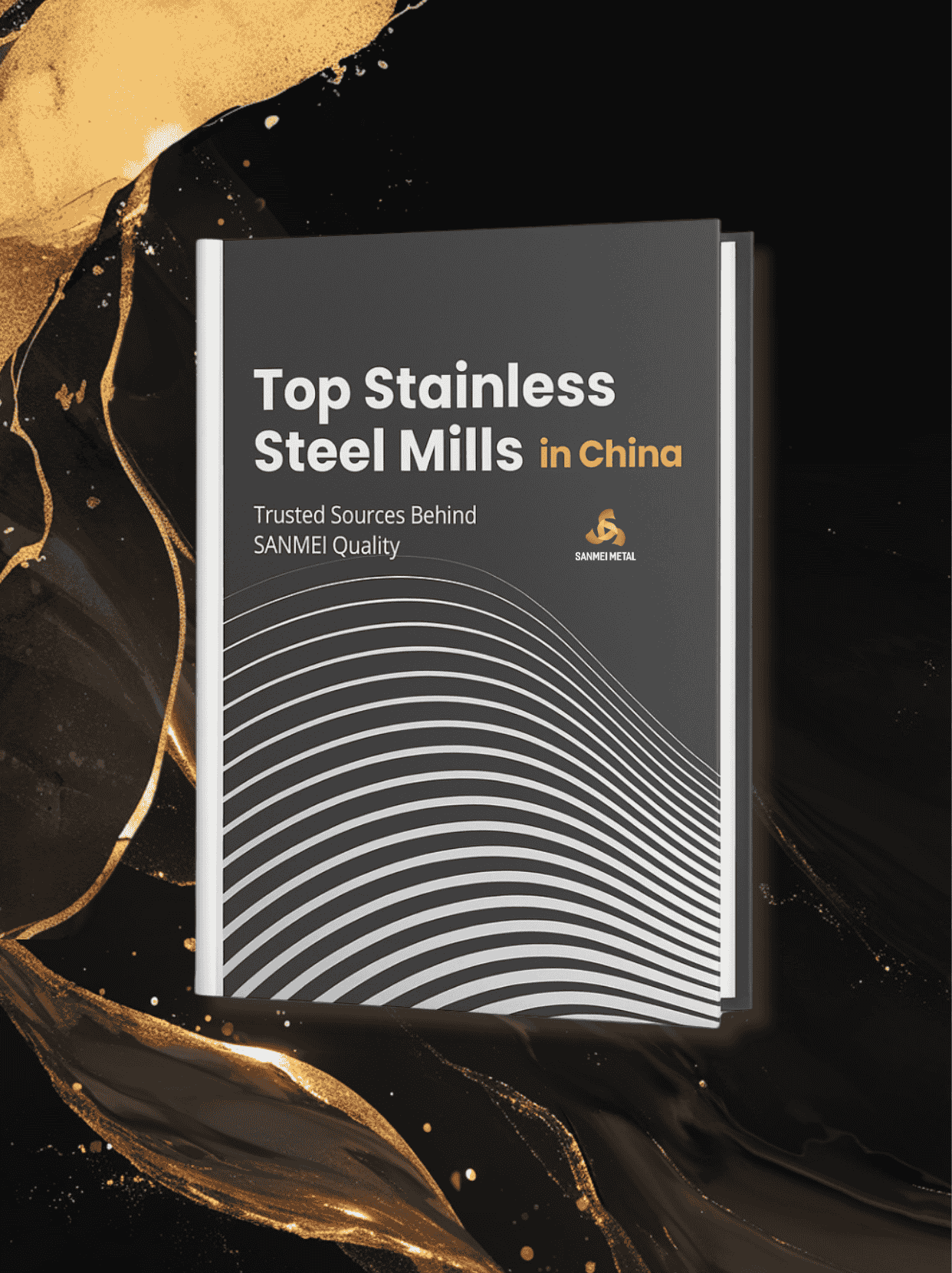
Get Your FREE Access: China’s #1 Steel Mill Dossier
Buyer-Oriented: Match mills by grade/finish/width-thickness/application
BAOWUTsingshanLiscoTisco


409 is equivalent to
Corrosion Resistance of 409 Stainless Steel
Moderate corrosion resistance. Less than 304 but suitable for mild environments.
Heat Resistance of 409 Stainless Steel
Good oxidation resistance up to 675°C.
Machinability of 409 Stainless Steel
409 stainless steel has moderate machinability, similar to carbon steel. Proper lubrication and chip breakers improve performance.
Welding of 409 Stainless Steel
Welding can be performed with all standard methods. Preheating and post-weld heat treatment improve performance.
Hot Working of 409 Stainless Steel
Hot working should be done at 1500 – 1800°F (816 – 982°C). Post-work annealing is recommended.
Annealing of 409 Stainless Steel
Annealing is performed at 1450 – 1650°F (788 – 899°C) followed by slow cooling.
Hardening of 409 Stainless Steel
409 stainless steel cannot be hardened by heat treatment. It can be slightly hardened by cold working.
Cold working of 409 Stainless Steel
409 can be cold worked but is more challenging than austenitic grades.
| 409 Stainless Steel Mechanical Property | ||||
| Property | Yield Strength, min. (ksi) | Tensile Strength, min. (ksi) | Elongation, min. (%) | Hardness, max. (Rb) |
| Value | 25 | 55 | 22 | 88 |
| Physical Properties of 409 Stainless Steel | |
| Property | Value |
| Density | 0.280 lb/in³ |
| Modulus of Elasticity | 29.0 x 10^6 psi |
| Coefficient of Thermal Expansion (68-212°F) | 5.84 x 10^-6 /°F |
| Thermal Conductivity | 9.4 Btu/ft·hr·°F |
| Specific Heat | 0.114 Btu/lb·°F |
| Electrical Resistivity | 28.3 Microohm-in |
| Grade | C (max) | Mn (max) | Si (max) | P (max) | S (max) | Cr | Ni (max) | Fe (balance) | N (max) | Ti (max) |
| 409 | 0.08 | 1 | 1 | 0.045 | 0.03 | 10.50-11.75 | 0.5 | Balance | - | 0.75 |

409 stainless steel exhibits excellent resistance to high temperatures and corrosion, making it ideal for automotive exhaust systems.

The performance of 409 stainless steel is exceptional, and its relatively low cost makes it more economical and affordable.
For High-Performance Exhaust Systems:
Choose 304 Stainless Steel for its superior corrosion resistance, especially in environments exposed to salt or industrial pollutants. This choice is ideal for customers seeking long-term durability and performance.
For Standard Automotive Exhaust Systems:
Choose 409 Stainless Steel due to its good high-temperature resistance and cost-effectiveness. It is suitable for most automotive applications where extreme environmental exposure is not a concern, providing a balance between performance and affordability.

Property | 304 Stainless Steel | 409 Stainless Steel |
Composition | 18-20% Cr, 8-12% Ni, ≤0.08% C | 10.5-11.75% Cr, ≤0.03% C |
Corrosion Resistance | Excellent in various environments | Good, particularly in high-temperature exhaust conditions |
Temperature Resistance | Up to 870°C (1598°F) in continuous service | Up to 675°C (1247°F) in continuous service |
Formability | Excellent | Good |
Weldability | Excellent | Good |
Magnetic Properties | Non-magnetic in annealed condition | Slightly magnetic |
Cost | Higher | Lower |

304 Stainless Steel:
Advantages: Offers superior corrosion resistance, particularly in marine or industrial environments. Excellent formability and weldability make it suitable for complex shapes and joints in exhaust systems.
Disadvantages: Higher cost compared to 409 stainless steel.
Typical Use: Ideal for high-performance and long-lasting exhaust systems, especially where the exhaust system may be exposed to harsh environments or salt (e.g., coastal areas).
409 Stainless Steel:
Advantages: Good oxidation and corrosion resistance at high temperatures, making it suitable for automotive exhaust systems. It is more cost-effective than 304, providing a good balance between performance and price.
Disadvantages: Lower overall corrosion resistance compared to 304, and slightly less formability and weldability.
Typical Use: Commonly used in standard automotive exhaust systems where cost considerations are important, and the exhaust system does not face extremely harsh environmental conditions.

| Type | Width (mm) | Weight (MT) | Thickness (mm) | ||||
| 409 Coil | 1000, 1219, 1240, 1500 or Customized | 3-10 | 0.15-3.0 | ||||

| Type | Width (mm) | Length (mm) | Thickness (mm) | |||||||||
| 409 Sheets | 1000, 1219, 1240, 1500 or Customized | 2000, 2438, 2500, 3000, 3048 | 0.3-3.0 | |||||||||
We are committed to giving our customers the best and highest quality service to ensure our customers' satisfaction.









Certified by prestigious institutions and committed to adhering to international standards in every aspect.




Customer feedback is the most authentic reflection of a company's quality.
View more technical references from Sanmei Metal regarding stainless steel coils and stainless steel sheets.
Headquarters:
Creating Center, No.142, Yuhe Road, Lecong Town, Shunde District, Foshan City, Guangdong Province, China. 528315
Factory: Liyuan Logistics City, Chencun Town, Shunde District, Foshan City, Guangdong Province, China. 528313
Australia Local Support Base: (Yatala, QLD) – Coming 2026